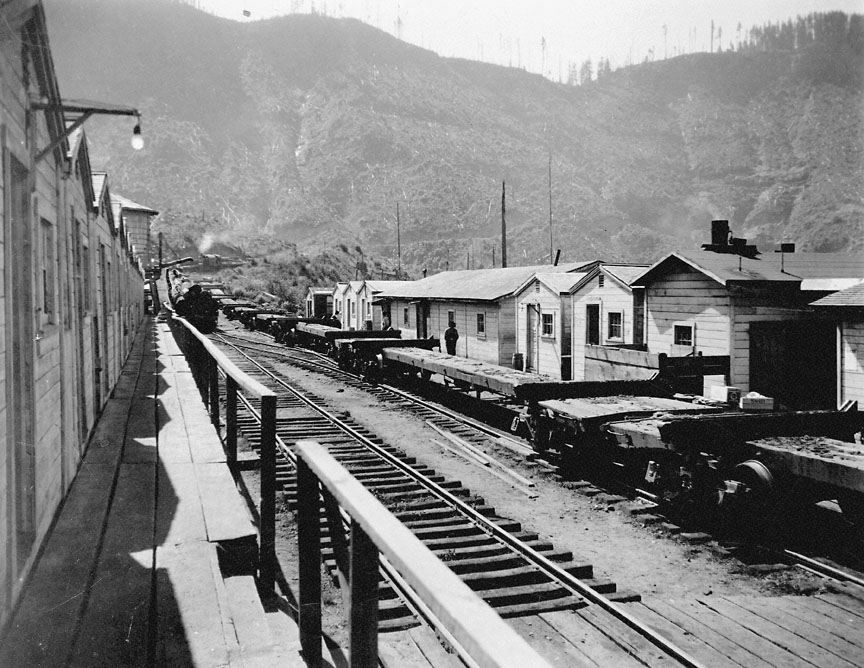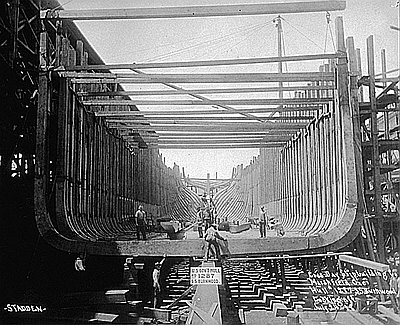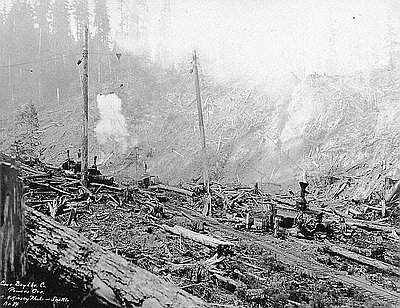A moving community of loggers is depicted in this 1930 photograph. From the 1890s through World War II, major logging operations in Oregon were railroad-based, with trackage extending for many miles from tidewater or a mill into public or private forest lands. While millworkers usually lived in rooming houses, boarding houses, or transient hotels nearby, woods workers often lived in bunk cars that were carried by train along with the moving front of logging operations. These camp cars included bunk houses for sleeping, a mess car for eating, and other cars that served for saw filing, blacksmithing, a commissary, and other tasks. The cars could be picked up and put on trucks—sets of railroad wheels—or, like the cars shown here on the left, be built on trucks, ready to move at a moment’s notice. These moving camps were often designated by numbers, so that Camp Two designated a specific spot along the logging railroad, the second location away from headquarters.
During the early 1900s, loggers endured exceptionally poor housing, an issue heavily pressed by the labor activists of the radical Industrial Workers of the World (the IWW, or Wobblies). A strike at an operation of the Coos Bay Lumber Company in 1913 is said to have caused the company to comply with demands for “clean sheets every Saturday, the bunkhouses cleaned and deloused,” and the bunkhouses heated so that loggers had a refuge after a wet day in the woods.
Camp Two was located east of the town of Powers on the company’s logging railroad to the Eden Ridge area. The spring at Camp Two supplied water to the large wooden tank; the water was used by the steam-powered railroad locomotives. In the center of the photograph, a wisp of smoke marks a logging locomotive heading a string of skeleton cars loaded with logs; another string of empty skeleton cars is on the track to the right. Log trains went to Powers on the company tracks, and then over 45 miles of the Southern Pacific Company tracks to the mill at Marshfield—now Coos Bay. Small motor cars called crummies or speeders took the workers from the camp into the woods each morning and back each evening, and also conveyed supplies and workers between Powers and Camp Two. Railroad camps such as this were the forerunners of the company town, developed as the logging workforce became less transient, more family-oriented, and more able to afford an automobile.
Further Reading:
Kamholz, Edward J., Jim Blain, and Gregory Kamholz. The Oregon-American Lumber Company: Ain't No More. Stanford, Calif., 2003.
Written by Richard Engeman, © Oregon Historical Society, 2005.


